-
 Bitcoin
Bitcoin $107,467.9126
1.26% -
 Ethereum
Ethereum $2,447.5288
-0.12% -
 Tether USDt
Tether USDt $1.0005
0.00% -
 XRP
XRP $2.1921
0.13% -
 BNB
BNB $647.2897
0.50% -
 Solana
Solana $144.8627
-0.37% -
 USDC
USDC $0.9996
-0.03% -
 TRON
TRON $0.2732
0.10% -
 Dogecoin
Dogecoin $0.1652
-0.18% -
 Cardano
Cardano $0.5700
-2.87% -
 Hyperliquid
Hyperliquid $37.0274
-1.81% -
 Bitcoin Cash
Bitcoin Cash $484.6957
0.19% -
 Sui
Sui $2.7354
-2.19% -
 Chainlink
Chainlink $13.1727
-1.49% -
 UNUS SED LEO
UNUS SED LEO $8.9978
-0.04% -
 Stellar
Stellar $0.2421
-2.33% -
 Avalanche
Avalanche $17.5633
-3.51% -
 Toncoin
Toncoin $2.8476
-1.94% -
 Shiba Inu
Shiba Inu $0.0...01166
-0.56% -
 Litecoin
Litecoin $85.1071
0.09% -
 Hedera
Hedera $0.1502
-2.96% -
 Monero
Monero $310.2774
-1.64% -
 Dai
Dai $0.9999
-0.01% -
 Polkadot
Polkadot $3.3584
-1.88% -
 Ethena USDe
Ethena USDe $1.0003
-0.04% -
 Bitget Token
Bitget Token $4.4443
2.90% -
 Pi
Pi $0.6242
14.04% -
 Uniswap
Uniswap $6.9774
-2.86% -
 Pepe
Pepe $0.0...09535
-5.05% -
 Aave
Aave $256.7574
-3.35%
Is the appearance of a morning star pattern in the bottom area a rebound signal?
The morning star pattern in crypto trading signals a potential bullish reversal after a downtrend, especially when confirmed by volume and key support levels.
Jun 26, 2025 at 11:00 am

What Is the Morning Star Pattern in Cryptocurrency Trading?
In technical analysis, the morning star pattern is a candlestick formation that signals a potential reversal from a downtrend to an uptrend. This pattern typically appears after a period of declining prices and consists of three candles:
- A large bearish (red) candle
- A smaller bullish or bearish candle that gaps down from the previous candle
- A large bullish (green) candle that closes within the range of the first candle
In the context of cryptocurrency markets, where volatility is high and price movements are often influenced by sentiment and macroeconomic factors, recognizing such patterns becomes essential for traders seeking entry points during market bottoms.
Morning star patterns are more reliable when they appear in oversold conditions, especially after prolonged sell-offs.
How Does the Morning Star Pattern Form in Crypto Charts?
The formation of a morning star occurs over three distinct trading periods:
- The first candle shows strong selling pressure, continuing the existing downtrend.
- The second candle reflects indecision in the market, with either a small green or red candle forming at a lower price level.
- The third candle demonstrates renewed buying interest, with the price rising and closing above the midpoint of the first candle.
This sequence suggests that sellers are losing control and buyers are beginning to enter the market. In crypto charts, particularly on daily or 4-hour timeframes, this pattern can serve as a visual cue for possible trend reversals.
Traders should look for volume confirmation during the third candle, as increased volume enhances the reliability of the reversal signal.
Why Is the Bottom Area Important for Interpreting the Morning Star?
A morning star appearing in the bottom area—typically identified through support levels, Fibonacci retracement zones, or relative strength index (RSI) readings below 30—is considered more significant than one occurring mid-trend. When prices reach historically low levels or areas where demand has previously overwhelmed supply, the appearance of a morning star could indicate a shift in market psychology.
Key elements to consider:
- Has the price reached a known support level?
- Is the RSI or MACD showing signs of divergence?
- Are there any recent positive news events influencing the asset?
These factors help confirm whether the morning star is a genuine reversal signal or just a temporary pause in a larger downtrend.
Bottom area formations must align with other technical indicators to avoid false signals, especially in highly volatile crypto environments.
How to Confirm a Morning Star Reversal Signal in Crypto?
Not every morning star pattern results in a successful reversal. To increase accuracy, traders should follow these steps:
- Check the Timeframe: Higher timeframes like the daily chart offer stronger signals than shorter ones like 15-minute or 1-hour intervals.
- Use Volume Analysis: A surge in volume on the third candle confirms that institutional or retail buyers are stepping in.
- Apply Moving Averages: If the price crosses above key moving averages (like the 50-day or 200-day), it supports the reversal hypothesis.
- Monitor RSI Divergence: If the RSI starts to rise while the price continues to fall before the pattern forms, it indicates hidden strength.
- Look for Candlewick Lengths: Long lower wicks on the second or third candle suggest rejection of lower prices.
Combining multiple confirmations increases the probability of a successful trade, reducing the risk of acting on false positives.
Practical Steps to Trade the Morning Star Pattern in Crypto Markets
Here’s how you can practically implement a trade based on a morning star pattern found in the bottom area:
- Identify the pattern clearly on your preferred charting platform (e.g., TradingView or Binance's native tools).
- Ensure the pattern forms near a key support level or after a strong downtrend.
- Wait for the third candle to close fully before considering entry.
- Place a buy order slightly above the high of the third candle to confirm momentum.
- Set a stop-loss just below the lowest point of the pattern to limit downside risk.
- Target resistance levels or use trailing stops to capture gains as the price moves upward.
It’s also crucial to backtest this strategy on historical data using platforms like Backtrader or Python-based scripts to verify its effectiveness across different cryptocurrencies.
Proper position sizing and risk management are critical when trading candlestick patterns in crypto, due to their inherent volatility.
Frequently Asked Questions (FAQ)
Q: Can the morning star pattern appear in bullish markets?
Yes, though less commonly. It may appear during pullbacks within an uptrend, signaling a resumption of the bullish move rather than a full reversal.
Q: How long should I wait after the morning star completes before entering a trade?
Ideally, wait for the next candle to open and show strength. Some traders prefer waiting for two additional bullish candles to confirm the trend change.
Q: Does the morning star work better with certain cryptocurrencies?
It works best with major cryptocurrencies like Bitcoin and Ethereum due to higher liquidity and clearer price action. Altcoins with erratic volume may produce unreliable signals.
Q: Should I rely solely on the morning star for making trades?
No. Always combine it with other technical indicators like RSI, MACD, or volume to filter out false signals and improve decision-making accuracy.
Disclaimer:info@kdj.com
The information provided is not trading advice. kdj.com does not assume any responsibility for any investments made based on the information provided in this article. Cryptocurrencies are highly volatile and it is highly recommended that you invest with caution after thorough research!
If you believe that the content used on this website infringes your copyright, please contact us immediately (info@kdj.com) and we will delete it promptly.
- DOGE, BlockDAG, and Coin Airdrops: The New Wave of Crypto Opportunities
- 2025-06-26 18:45:12
- Neo Pepe and the Crypto Presales Popping in June 2025
- 2025-06-26 18:45:12
- Bitcoin, DeFi Tokens, and Relist Moves: What's Hot in Crypto Right Now
- 2025-06-26 18:30:11
- Binance, Bitcoin, and Altcoins: Navigating the Crypto Landscape
- 2025-06-26 19:05:12
- Bitcoin's Bull Flag: Technical Analysis, Crypto Market Sentiment, and Price Predictions
- 2025-06-26 19:05:12
- Pi Network, Volatility, and Pi2Day: Navigating the Hype
- 2025-06-26 19:10:14
Related knowledge
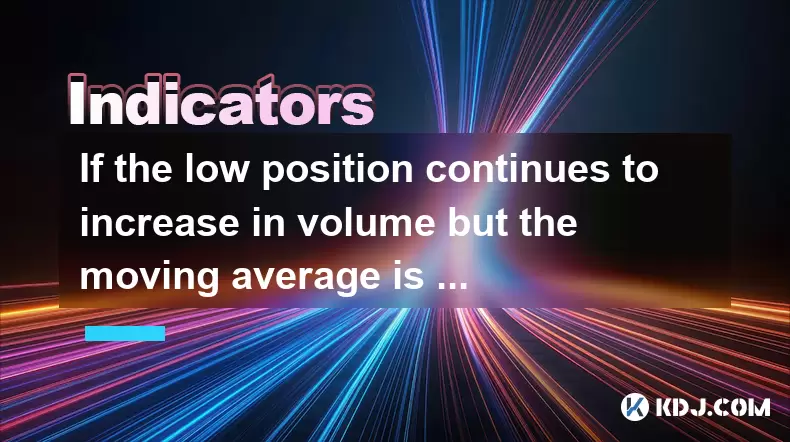
If the low position continues to increase in volume but the moving average is still short, should we wait and see?
Jun 26,2025 at 08:07pm
Understanding the Scenario: Low Position with Increasing VolumeIn the cryptocurrency market, traders often encounter situations where a particular asset is trading at a relatively low price level (referred to as a 'low position'), yet there is a noticeable increase in trading volume. This phenomenon can be confusing because it suggests that more market ...
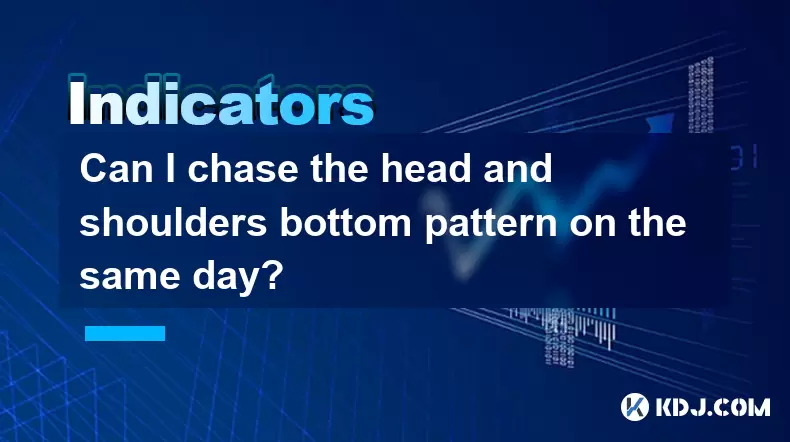
Can I chase the head and shoulders bottom pattern on the same day?
Jun 26,2025 at 06:14pm
Understanding the Head and Shoulders Bottom Pattern in Cryptocurrency TradingThe head and shoulders bottom pattern, also known as the inverse head and shoulders, is a reversal chart pattern commonly observed in cryptocurrency price charts. It signals a potential shift from a downtrend to an uptrend. The structure consists of three distinct lows: the lef...
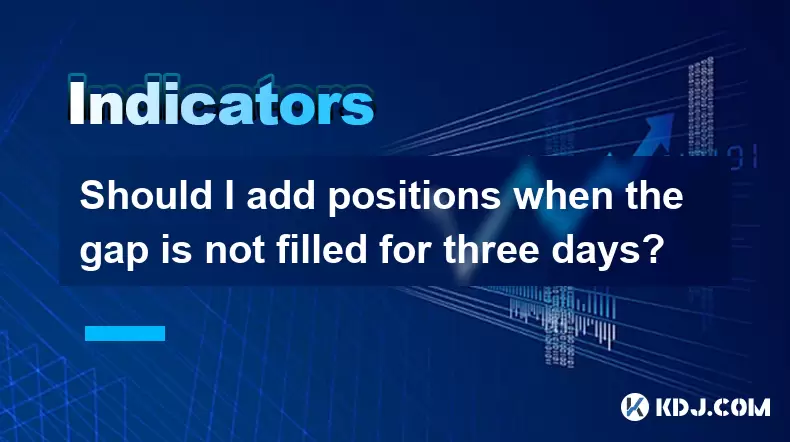
Should I add positions when the gap is not filled for three days?
Jun 26,2025 at 07:49pm
Understanding the Concept of Gaps in Cryptocurrency TradingIn cryptocurrency trading, a gap occurs when the price of an asset opens significantly higher or lower than its previous closing price, with no trading activity taking place in between. This phenomenon is common due to the 24/7 nature of crypto markets and external events such as news releases, ...
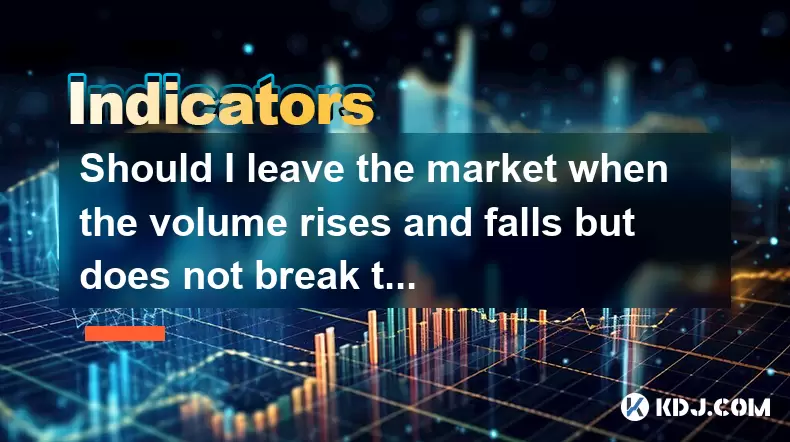
Should I leave the market when the volume rises and falls but does not break the 5-day line?
Jun 26,2025 at 06:08pm
Understanding Market Volume and the 5-Day Moving AverageWhen traders talk about market volume, they're referring to the total number of shares or contracts traded during a specific period. In cryptocurrency trading, volume plays a crucial role in confirming trends and predicting potential reversals. The 5-day moving average (5DMA) is a short-term indica...
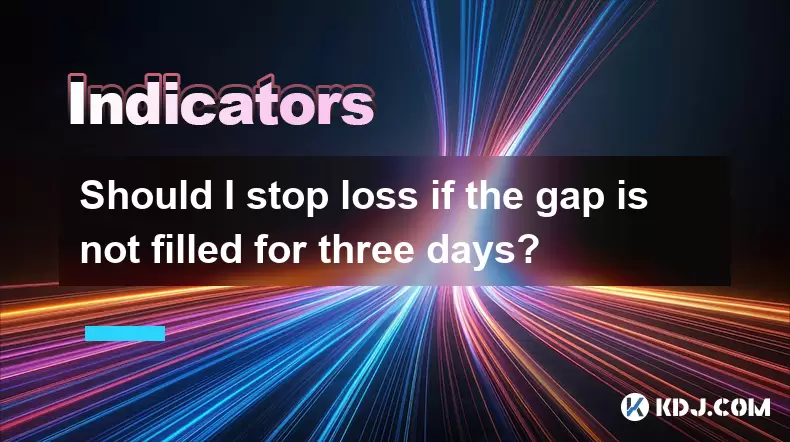
Should I stop loss if the gap is not filled for three days?
Jun 26,2025 at 06:35pm
Understanding Gaps in Cryptocurrency TradingIn cryptocurrency trading, gaps refer to areas on a price chart where the asset's price jumps from one level to another without any trading occurring at the intermediate levels. These gaps can appear due to sudden market movements, often influenced by news events, macroeconomic data releases, or shifts in inve...
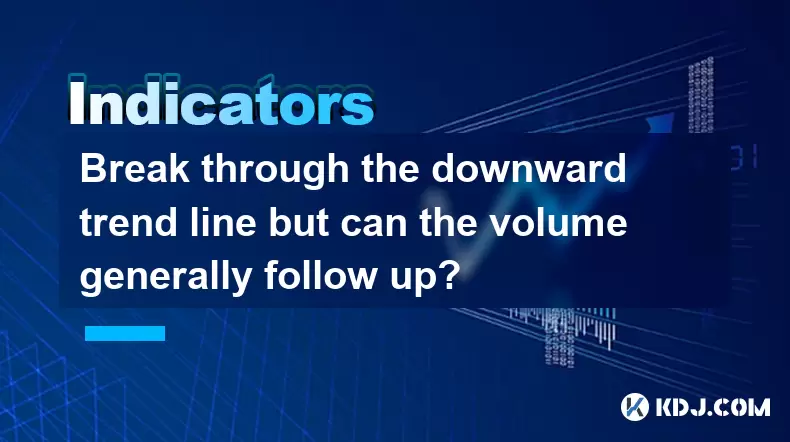
Break through the downward trend line but can the volume generally follow up?
Jun 26,2025 at 05:28pm
Understanding the Significance of Breaking a Downward Trend LineIn technical analysis, a downward trend line represents a resistance level formed by connecting two or more high points in price action. When the price breaks above this line, it suggests that the selling pressure may be weakening and that buyers are gaining control. This is often seen as a...

If the low position continues to increase in volume but the moving average is still short, should we wait and see?
Jun 26,2025 at 08:07pm
Understanding the Scenario: Low Position with Increasing VolumeIn the cryptocurrency market, traders often encounter situations where a particular asset is trading at a relatively low price level (referred to as a 'low position'), yet there is a noticeable increase in trading volume. This phenomenon can be confusing because it suggests that more market ...

Can I chase the head and shoulders bottom pattern on the same day?
Jun 26,2025 at 06:14pm
Understanding the Head and Shoulders Bottom Pattern in Cryptocurrency TradingThe head and shoulders bottom pattern, also known as the inverse head and shoulders, is a reversal chart pattern commonly observed in cryptocurrency price charts. It signals a potential shift from a downtrend to an uptrend. The structure consists of three distinct lows: the lef...

Should I add positions when the gap is not filled for three days?
Jun 26,2025 at 07:49pm
Understanding the Concept of Gaps in Cryptocurrency TradingIn cryptocurrency trading, a gap occurs when the price of an asset opens significantly higher or lower than its previous closing price, with no trading activity taking place in between. This phenomenon is common due to the 24/7 nature of crypto markets and external events such as news releases, ...

Should I leave the market when the volume rises and falls but does not break the 5-day line?
Jun 26,2025 at 06:08pm
Understanding Market Volume and the 5-Day Moving AverageWhen traders talk about market volume, they're referring to the total number of shares or contracts traded during a specific period. In cryptocurrency trading, volume plays a crucial role in confirming trends and predicting potential reversals. The 5-day moving average (5DMA) is a short-term indica...

Should I stop loss if the gap is not filled for three days?
Jun 26,2025 at 06:35pm
Understanding Gaps in Cryptocurrency TradingIn cryptocurrency trading, gaps refer to areas on a price chart where the asset's price jumps from one level to another without any trading occurring at the intermediate levels. These gaps can appear due to sudden market movements, often influenced by news events, macroeconomic data releases, or shifts in inve...

Break through the downward trend line but can the volume generally follow up?
Jun 26,2025 at 05:28pm
Understanding the Significance of Breaking a Downward Trend LineIn technical analysis, a downward trend line represents a resistance level formed by connecting two or more high points in price action. When the price breaks above this line, it suggests that the selling pressure may be weakening and that buyers are gaining control. This is often seen as a...
See all articles
























































































